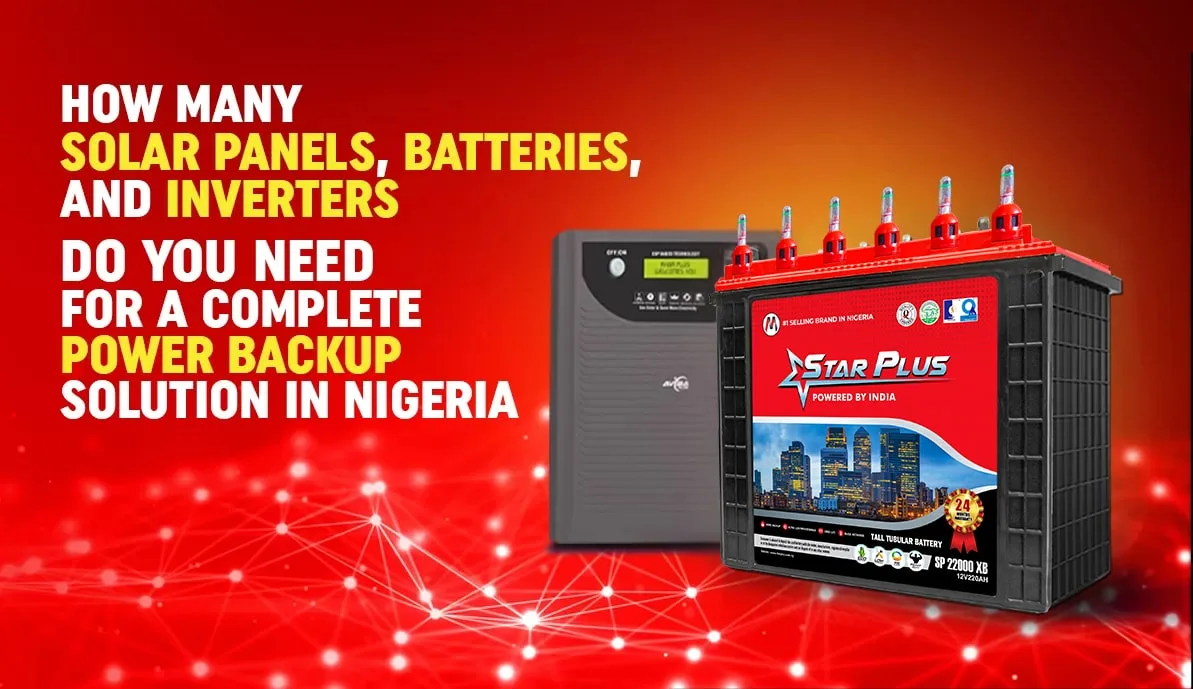Switching to solar power is a wise choice and is becoming increasingly popular in Nigeria. Nigerian power situation makes it not a choice but a necessity to rely on alternative power sources like solar energy. The power grid in Nigeria is unreliable and does not supply sufficient energy to power up the necessary devices you need.
Moreover, switching to a renewable power source is a step taken toward a greener future, which is needed so much in today’s world. So, if you are planning to switch to solar energy, you are making a wise choice.
But the first step you need to take before you move over to solar energy is calculating your energy needs. This will help you determine how many inverters batteries, and solar panels you need to power your appliances at times of need.
Calculate the Total Wattage of the Appliances You Want to Power
First, you need to calculate the power of the appliances you want to power up at times of need. For that, find out the wattages of the appliances by looking at their nameplates. The appliance plate will have its wattage listed either in watts or kilowatts. After you find the wattage of each appliance, you need to total it up to find out the total energy requirements of your load.
For example, you want to power up the following items:
Ceiling fan – 120 W
TV LCD – 150 W
LED Bulb (10) – 100 Watts
Freezer – 400 W
Laptop – 100 W
So, if you add them up, you get 870 Watts.
In this blog, we will go down with this calculation in hand. If your power requirements are different (which is apparent), you’ll have to choose accordingly.
The Size of the Inverter You Would Need for Your Solar Power System
Finding out what size of an inverter you’d need is the second step in the calculation. An inverter is an integral component of any solar power system. It transforms DC (direct current) to AC (alternating current), which can then be used by appliances to run properly. Knowing how to size your inverter is a key step in going solar.
We recommend that you buy an inverter that is almost twice your total energy requirements to avoid the risk of overloading and that you have extra capacity for use if you need to run more than the appliances for which you run the calculations.
In this case, your total electrical load is 870 W. So, you should choose an inverter that is at least 2000 watts in size.
How Many Batteries Do You Need for Your Solar Power System?
The next stage in calculating your solar power requirements is to consider how many hours of backup power you would require. However, you must remember that the voltage of your inverter will determine the number of batteries you’ll need.
The Aviba 24V pure sine wave inverter, for example, requires two 12V Deep cycle Star Plus Tubular Batteries. Suppose you need a four-hour backup per day on average. You can use the following formula to determine the size of the required battery bank.
24 V (Inverter Voltage) x 220 Ah x 0.8 (Depth of discharge) x 0.8 (Efficiency) / 870 watts = 4 Hours
The above calculation reveals that an 870 W load with two 220 Ah deep cycle batteries will give you a backup time of 4 hours. The same two batteries would last longer with a lower load.
Want to Buy Tubular Inverter Battery for Your Home and Office?
How Many Solar Panels Do You Need?
Now that you know your inverter and battery bank size, you need to calculate how many solar panels you would need to run your load during the day and, at the same time, charge your inverter batteries.
Number of Solar Panels to Charge Your Batteries
To calculate the number of solar panels you would need to charge your batteries:
220 Ah (Battery bank capacity) x 24 V = 5280 WH (watt hours)
5280 WH / 4 hours (average hours of peak sunlight in Lagos) = 1320 W
1320 W / 300 W (size of solar panel) = 5 (number of solar panels required)
Number of Solar Panels to Power Your Load
Next, you need to find out how many solar panels you will need to power your load. To work this out, you can use the following formula:
870W (load) x 4 hours (hours of operation) = 3480 WH
To this, you need to add an additional 30% to compensate for unexpected operational losses.
3480WH x 1.30 = 4524 WH
Next, you need to find the average hours of peak sunlight in your area and how much your panels receive during the peak sun hours.
We will base the calculation on the average hours of peak sunlight in Lagos, which is 4 hours.
So, the rest of the calculation will look like this:
4524 WH / 4 hours = 1131 W
1131 W / 300 W (size of solar panel) = 3.77
So, to power your 870 W load in Lagos, Nigeria, you would need approximately four 300W solar panels (3.77 rounded to 4)
Conclusion
The number of solar panels, inverters, and batteries you need will depend on the load you wish to run and the number of hours you want to run it. The larger the load and backup time, the greater the number of solar panels, the larger the inverter capacity, and the greater the number of inverter batteries. The above sample calculations are to provide you with an example of how the calculations are done and also to provide you with a rough estimate of the required number of solar panels, inverters, and batteries if you are based in Lagos, Nigeria. Hope you find the blog helpful. For any inquiries or installments, you can always connect with our professionals for a prompt and complete solution.



0 Comments